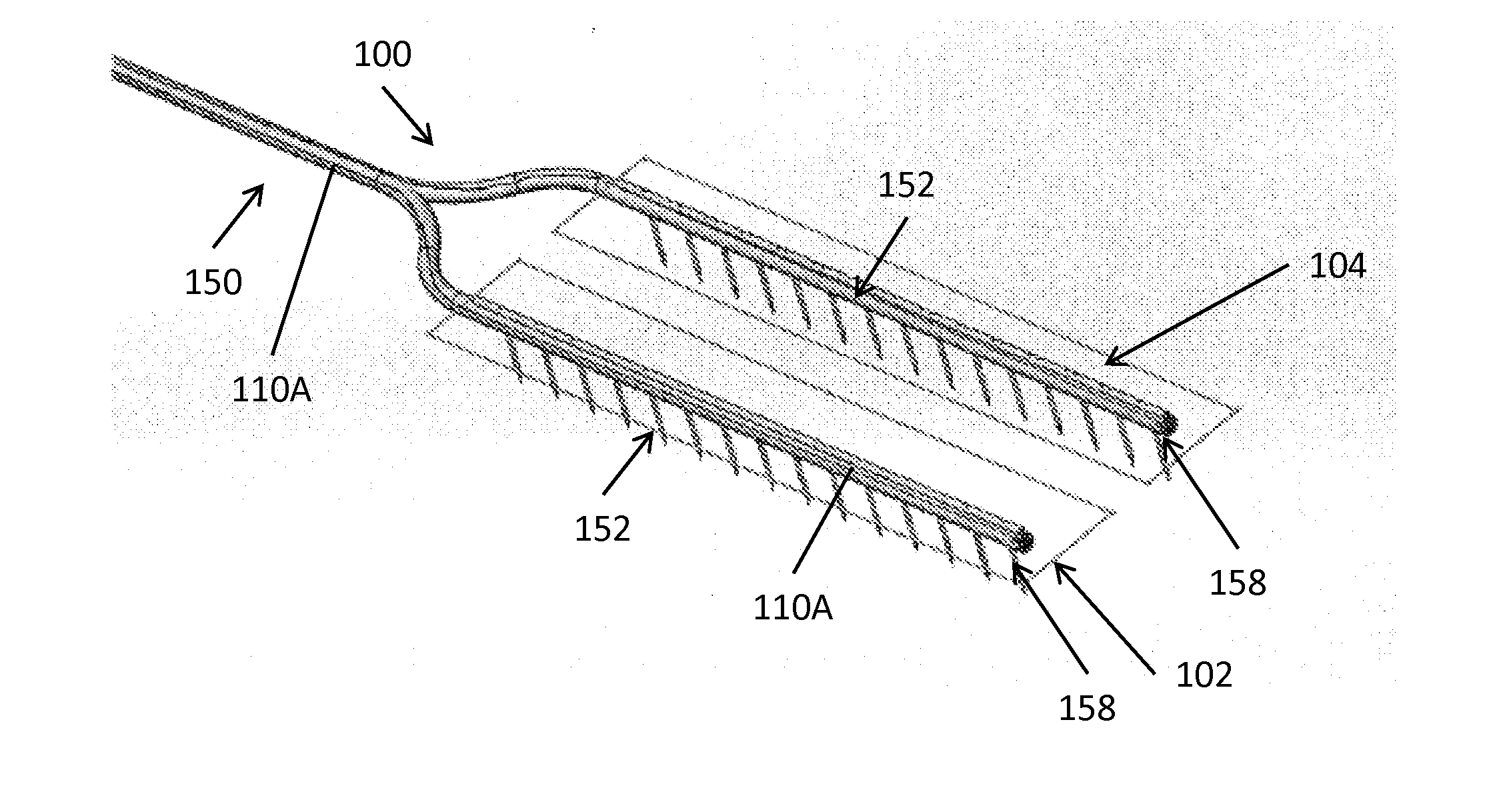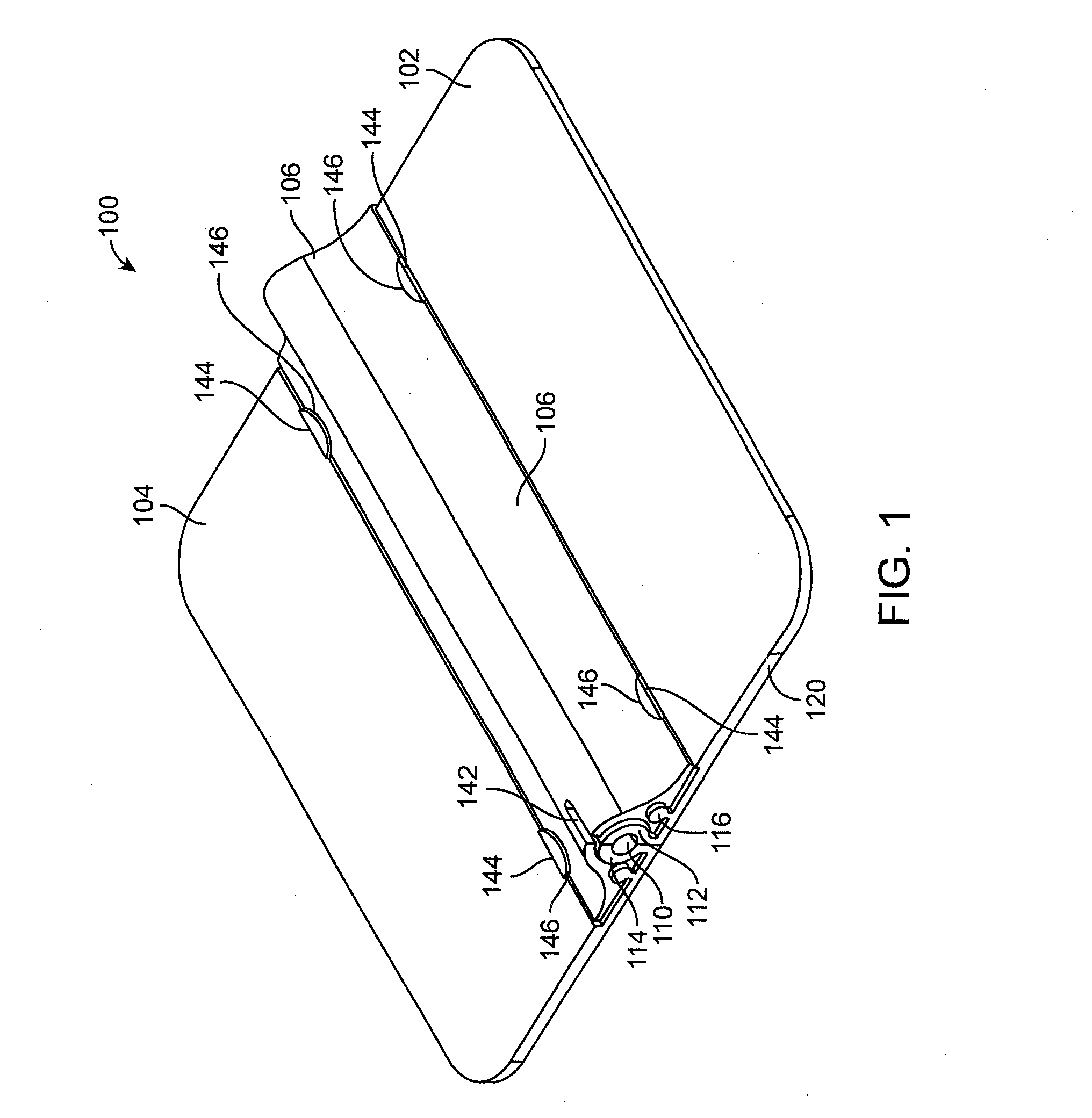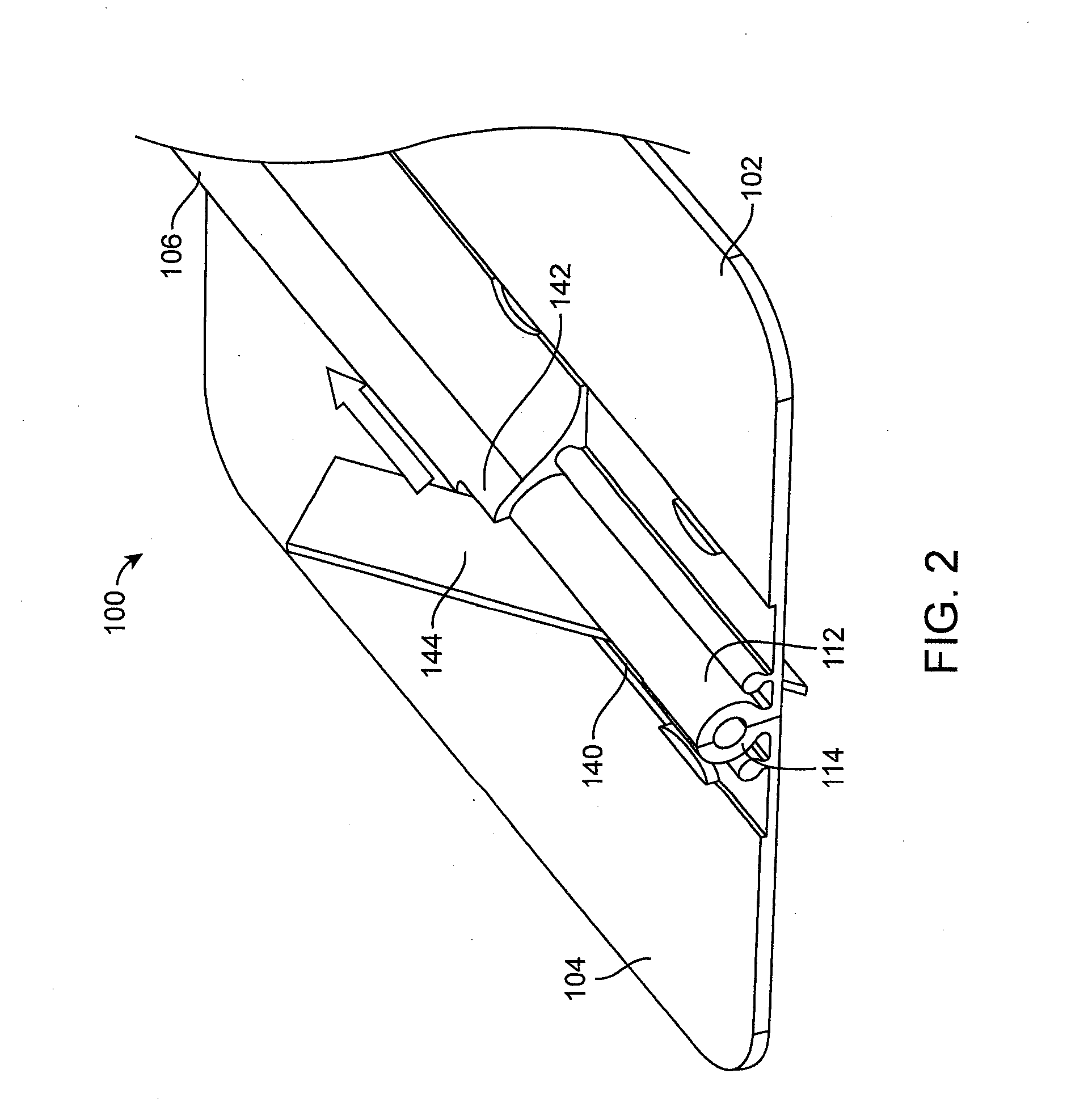Rapid closing surgical closure device
a surgical closure and rapid technology, applied in the direction of catheters, infusion syringes, therapy, etc., can solve the problems of inconvenient use, inconvenient operation, and inability to provide precise closures
- Summary
- Abstract
- Description
- Claims
- Application Information
AI Technical Summary
Benefits of technology
Problems solved by technology
Method used
Image
Examples
Embodiment Construction
[0102]FIG. 1 is a perspective drawing of a surgical closure device 100 according to the present invention being applied to a patient's skin. Generally, the surgical closure device 100 includes a first adhesion patch 102, a second adhesion patch 104 and a binder 106 that is configured to hold the first and second adhesion patch 102, 104 together as shown. The first adhesion patch 102 and the second adhesion patch 104 are generally planar and are preferably constructed of a flexible elastomeric material that is biocompatible for skin contact. Suitable materials include, but are not limited to, natural rubber, polyurethane, silicone, etc. Optionally, the first and second adhesion patch 102, 104 may be reinforced with fibers, a mesh or a woven or knitted textile fabric.
[0103]Optionally, the first and second adhesion patch 102, 104 may have pores, slits, mesh or openings through them to ventilate the patient's skin below the closure device 100. The skin contacting surfaces of the first a...
PUM
 Login to View More
Login to View More Abstract
Description
Claims
Application Information
 Login to View More
Login to View More - R&D
- Intellectual Property
- Life Sciences
- Materials
- Tech Scout
- Unparalleled Data Quality
- Higher Quality Content
- 60% Fewer Hallucinations
Browse by: Latest US Patents, China's latest patents, Technical Efficacy Thesaurus, Application Domain, Technology Topic, Popular Technical Reports.
© 2025 PatSnap. All rights reserved.Legal|Privacy policy|Modern Slavery Act Transparency Statement|Sitemap|About US| Contact US: help@patsnap.com



